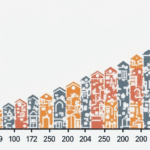Understanding the Alzheimer’s Crisis in Mexico
Alzheimer’s disease (AD) is the most common form of dementia in Mexico, affecting 1.3 million people over the age of 60. Experts predict that this number will triple by 2050, putting immense strain on healthcare systems and Mexican families. This growing challenge is closely tied to the aging population in the country.
Key Facts about Alzheimer’s in Mexico
- AD accounts for 60-80% of all dementia cases in Mexico.
- Currently, 1.3 million people suffer from dementia, with the number projected to rise to over 3.5 million by 2050.
- Nine out of ten Alzheimer’s cases in Mexico remain undiagnosed, delaying crucial treatment.
The Subdiagnosis Issue and its Consequences
Marco A. Murillo Alemán, president of Alzheimer Mexico, I.A.P., highlights the alarming subdiagnosis rate in Mexico. Due to insufficient infrastructure and misinformation, individuals with Alzheimer’s can wait 3-10 years before receiving a diagnosis, causing significant delays in treatment.
Economic Impact of Alzheimer’s
Alzheimer’s not only affects patients’ health but also places a substantial burden on families and the national economy. Often, family members take on caregiving roles, abandoning their jobs and causing financial strain. Women predominantly shoulder this responsibility.
Proposed Solutions by Alzheimer Mexico
Alzheimer Mexico and The Economist Impact’s report suggest establishing specialized day centers for dementia patients. These facilities offer non-pharmacological treatments, including cognitive and physical stimulation, providing relief for caregivers and slowing disease progression.
Concientizar, Prevenir y Actuar: The Key to Overcoming the Crisis
To combat stigma and misinformation, Alzheimer Mexico focuses on prevention by disseminating the 14 identified risk factors, such as smoking, obesity, hypertension, and social isolation. Modifying these factors can reduce the likelihood of developing Alzheimer’s by 45%.
Urgent Need for Action
Sara G. Aguilar Navarro, head of the Geriatrics Service at the National Institute of Medical Sciences and Nutrition Salvador Zubirán, emphasizes the need to move from theory to action. The National Plan remains a theoretical discussion among experts, with little execution.
Importance of Diagnosis and Treatment
Murillo stresses the significance of early diagnosis combined with pharmacological and non-pharmacological treatments to slow disease progression and improve patients’ quality of life. He also highlights the necessity for medical personnel training to identify early warning signs and diagnose dementia types.
Key Challenges and Next Steps
- Lack of healthcare professional training for Alzheimer’s diagnosis and care
- Absence of public databases or records on disease incidence and prevalence
- Fragmented care and unequal access to services
- Improved support for caregivers
Alzheimer Mexico’s Awareness Efforts
Alzheimer Mexico invites the public to their annual event “Alzheimer, Aprende y Actúa” (September 21-26) for free lectures on prevention and early detection. For more information, visit https://alzmx.org/.






